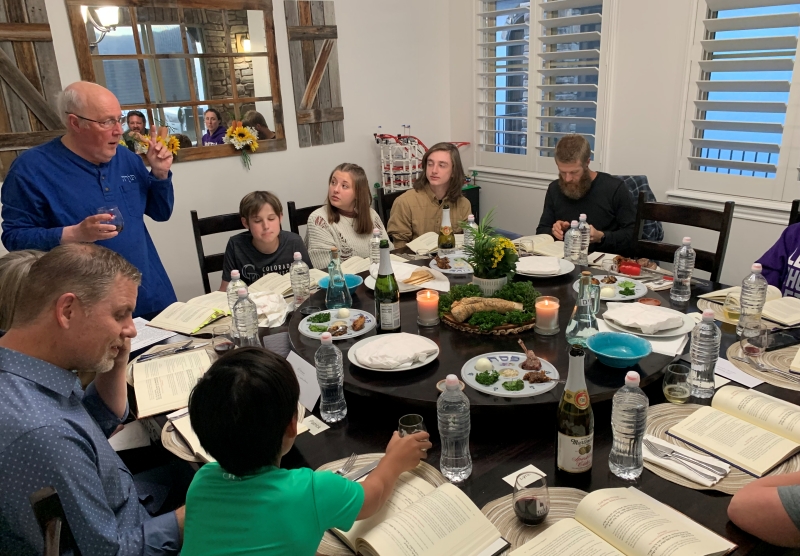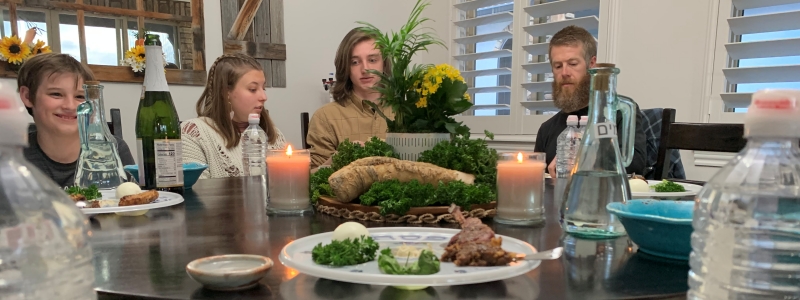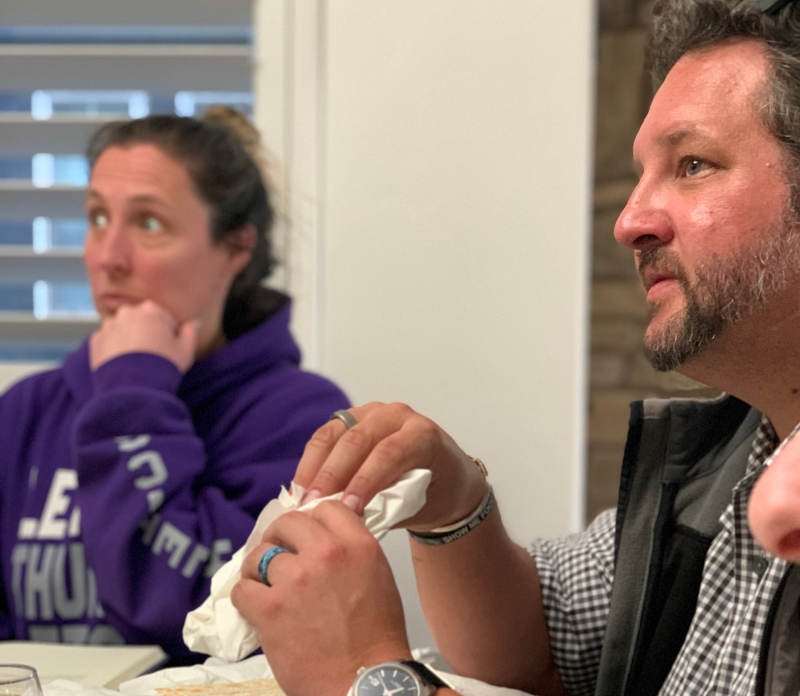Passover Seder
April 13, 2022Here are the various notes appended to earlier weekly essays that relate to our group's Passover Seder on April 13th. I've pulled them all together here for easier reference...
Where is Passover described in the Torah?
- Exodus 12, the 10th plague in Egypt
- Exodus 23:15, the Festival of Unleavened Bread (Passover)
- Leviticus 23:4-8, the Festival of Passover
- Deuteronomy 16:1-8, the Festival of Passover
The Haggadah ("the telling") contains the Passover Seder details for the service/meal. It includes what you do and say across 15 sections or parts of the Seder (pronounced say-der). The Haggadah was created roughly around the 2nd or 3rd Century A.D. Passover is one of three commanded Festivals in the Torah. The main purpose of this ritual is to remember and give thanks for the Exodus, one of the two pillars of Judaism. The other pillar is Creation which is remembered every Shabbat (Sabbath).
Check out this PragerU 5-minute video about Passover, here.
Who, surprisingly, is not mentioned in the Passover Seder? Moses! Lest he become worshipped. This would be like George Washington not being mentioned in a 4th of July remembrance! No one knows where Moses is buried, either, for the same reason. BTW, Moses was denied entry to the Promised Land not because he hit the rock to get water. Do you know why God didn't allow Moses into the Holy Land? See Numbers 20:7-11 and Deuteronomy 32:51–52.
The family recently reminded us of a fun movie about a dysfunctional family having a Passover Seder. It's called When Do We Eat and is a pretty funny little romp through a crazy Seder experience. The Torah, as you know, is replete with dysfunctional families. Here's a chance to have a little fun, don't take it too seriously, and pick up on a few Seder and Jewish tidbits. Another little kick... one of the producers is a company called "Pictures from the Fringe" with a background image of the fringes/tassles on Jewish clothing, called tzitzit (pronounced tzeetzeet). These fringes are there to be a constant reminder to follow God's instructions.
The Seder is written totally in the first person for the participants. We were brought out of Egypt, we were slaves, etc.; not "they" were brought out. This is so we identify personally with the event and what was done for us. Gratitutde!
There are four cups of wine consumed during the Passover Seder. Each represents the four expressions of God for deliverance. Interestingly, these relate remarkably with our Limitless message series and sozo!
| Seder Wine Cup | Sozo |
| 1. "I will bring out." | Saved |
| 2. "I will deliver." | Freed |
| 3. "I will redeem." | Healed/Redeemed |
| 4. "I will take." | "take" as in take a spouse, become one, become whole - sozo! |
The point of the Seder ritual is to remember history and be grateful. Without your history, you aren't anything. Who would you be without your memories, your history. You certainly wouldn't be "you."
So you've been invited to a Jewish Passover Seder. Congrats, you'll love it. If you know very little about a Seder event, you may want to read up on a few etiquette issues. See these two articles: Seder Etiquette and Seder for Non-Jews. One thing I didn't find covered in the Seder-etiquette articles I reviewed, though I do remember reading it somewhere... Don't wear jewelry or clothes symbolic of other religions to a Jewish-hosted Seder. For example, Christians, leave your cross jewelry at home. It's an etiquette thing, you're not denouncing your Christianity; your host probably knows full well you're a Christian. You're simply not being needlessly provocative toward your host. Of course, for our Seder with all Christians present, this need not apply.
As it turns out, Pastor Josh Starnes' message on April 10, 2022 interestingly generated some thoughts regarding our Seder. See this page (4th paragraph).
For our group's Seder experience, we'll use Prager's Rational Passover Haggadah.


Matt cooked brisket and burnt ends.
|
Potato Kugel Cups |
"Only the men got out of Egypt," quipped Hilda Prager |
 Matt has an afikoman he just redeemed from Matteo. |
Lava Cake Lava Cake Frosting |
|
|